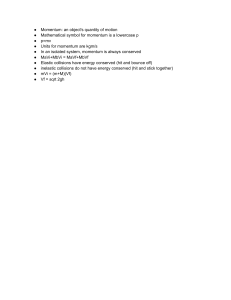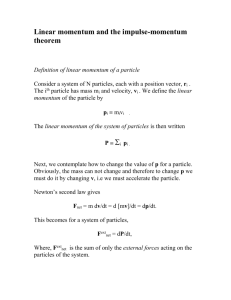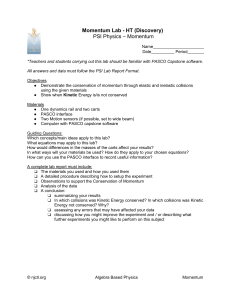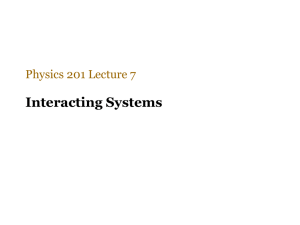Chapter 9-10 Key Equations and Ideas
advertisement
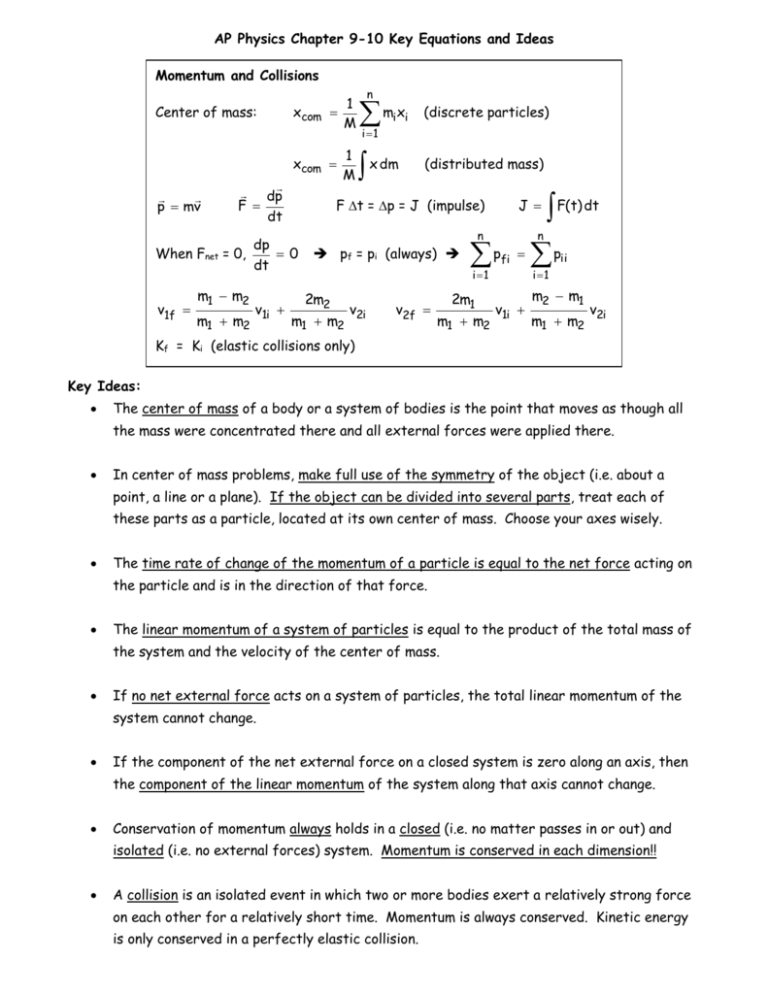
AP Physics Chapter 9-10 Key Equations and Ideas Momentum and Collisions Center of mass: 1 xcom M xcom p mv dp F dt dp When Fnet = 0, 0 dt v1f m1 m2 m1 m2 v1i 1 M n m x (discrete particles) x dm (distributed mass) i i i 1 F(t) dt p p F t = p = J (impulse) J n n pf = pi (always) 2m2 m1 m2 v2i v2f ii fi i 1 2m1 m1 m2 i 1 v1i m2 m1 m1 m2 v2i Kf = Ki (elastic collisions only) Key Ideas: The center of mass of a body or a system of bodies is the point that moves as though all the mass were concentrated there and all external forces were applied there. In center of mass problems, make full use of the symmetry of the object (i.e. about a point, a line or a plane). If the object can be divided into several parts, treat each of these parts as a particle, located at its own center of mass. Choose your axes wisely. The time rate of change of the momentum of a particle is equal to the net force acting on the particle and is in the direction of that force. The linear momentum of a system of particles is equal to the product of the total mass of the system and the velocity of the center of mass. If no net external force acts on a system of particles, the total linear momentum of the system cannot change. If the component of the net external force on a closed system is zero along an axis, then the component of the linear momentum of the system along that axis cannot change. Conservation of momentum always holds in a closed (i.e. no matter passes in or out) and isolated (i.e. no external forces) system. Momentum is conserved in each dimension!! A collision is an isolated event in which two or more bodies exert a relatively strong force on each other for a relatively short time. Momentum is always conserved. Kinetic energy is only conserved in a perfectly elastic collision.
